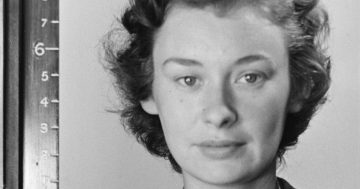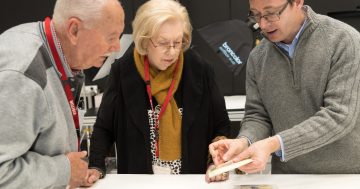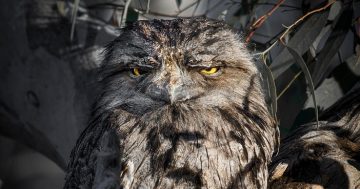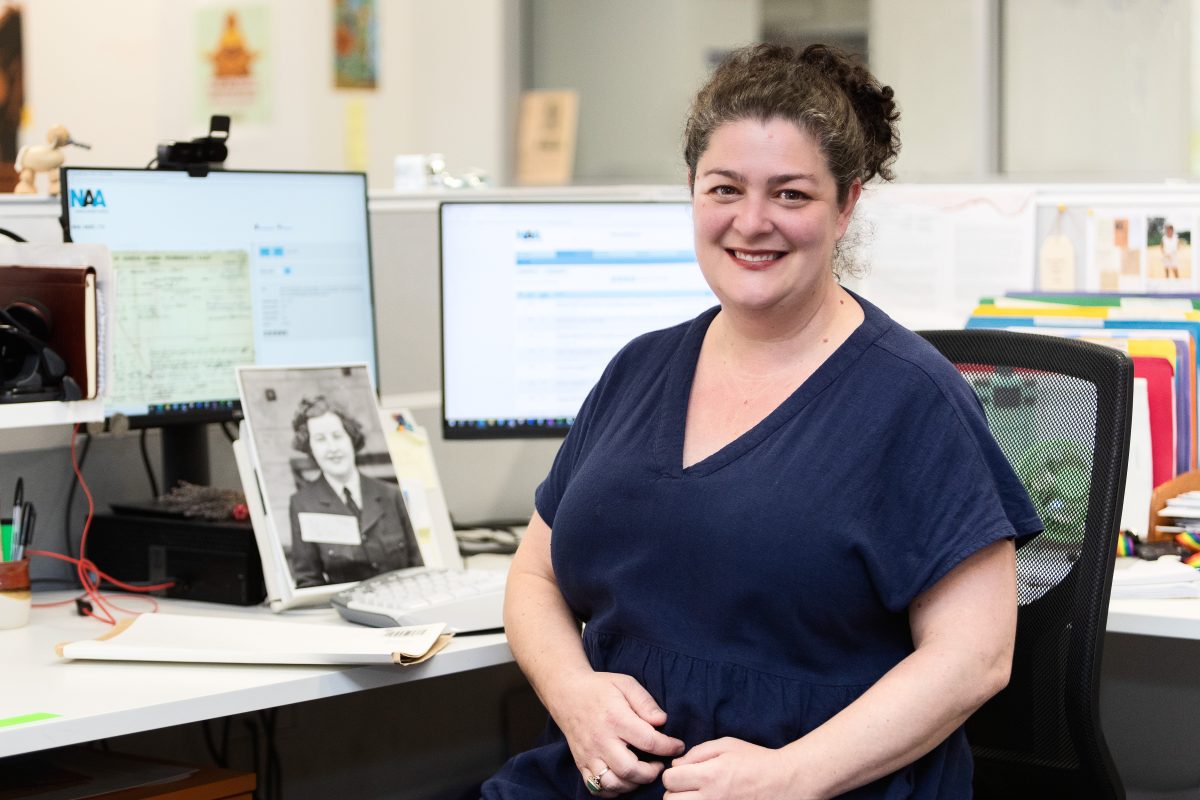
Project co-ordinator for the National Archives of Australia’s World War II digitisation project, Rebecca Penna. Photo: National Archives of Australia.
When you digitise more than a million records from World War II, chances are, you’re digitising a million more stories. From the tales of those who fought and the campaigns in which they battled to the people they left at home and the life many of these men and women led prior to serving their country.
The National Archives of Australia (NAA) announced this week it had reached the seven-figure milestone of digitised records, including from the Royal Australian Navy, Australian Army and Royal Australian Air Force. They are now being made available for free, progressively, online.
Not only does this digitisation ensure these pieces of Australian history survive for next generations to read, research or just wander through, but they also reveal some remarkable stories about our veterans – so much more than just their name and serial number. The stories go beyond the soldier, the nurse or the commanding officer – and tell the story of the person.
One such story is Enid Backhouse who enlisted in the Women’s Auxiliary Australian Air Force at age 24 in January 1943.
Enid was probably what they used to call “a modern woman”. Prior to enlisting, she attended evening classes at the University of Western Australia and studied literature via correspondence at the Literary Institute in London and Oxford University.
She served as a section officer in Melbourne and while her comrades spent their rare days off sleeping, seeing friends or going out to dances, Enid wrote novels – her first three.
Enid’s story comes full circle for the NAA. Not only does it hold her war records, it contains the applications for copyright for some of her novels, including The Sky has Its Clouds and her 1946 children’s story titled Enone and Quentin. The latter was described in an article in The Western Australian newspaper of Saturday 16 November 1946 as: “a fairy book full of romance and make-believe, specifically suitable as a gift for Christmas.”
But the reviews were less kind in Enid’s service record: “It is not infrequently found that those gifted with literary ability, especially the female novelist who indulges in flights of fancy, are unable to approach earthly problems with a practical mind.
“It is suggested that S/O Backhouse is psychologiclly unsuitable for equipment duties. She is intelligent and it is my opinion that use could be made of her literary ability in the Directorate of Public Relations.”
After demobilisation, Enid worked as a scriptwriter in England before returning to Australia in 1951 to care for her parents – and publish more novels.
Director-general of the NAA, Simon Froude, said such service records were a valuable resource, not just for those interested in the military, but for family history researchers and anyone interested in the involvement of Australians in our wartime history.
‘These records will help the nation to better understand, remember and reflect on the service and sacrifice of each man and woman who served,” he said.
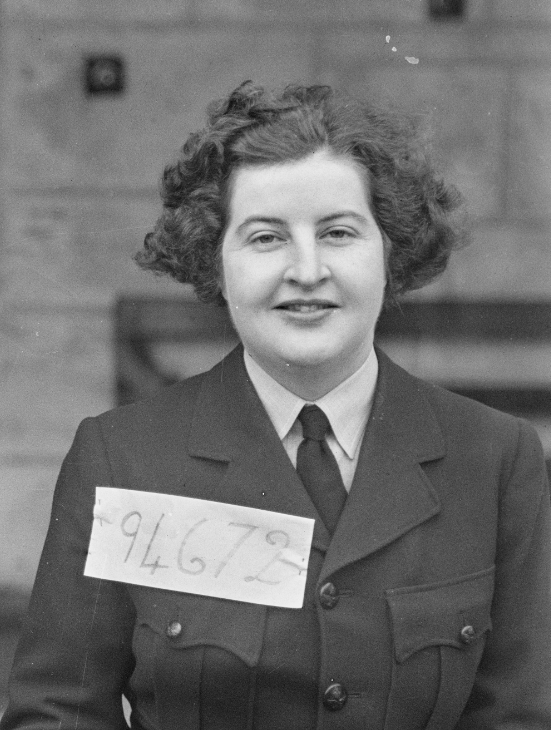
Thanks to the National Archives’ digitisation project, the whole story of servicewomen such as Enid Backhouse can be told. Photo: National Archives of Australia.
Digitisation project manager Rebecca Penna said matching the service records with other documents about servicemen and women helped tell the full story of those who served their country.
It could also be quite emotional. She cited the example of Alma May Beard, who, on 19 June, 1941, was commissioned into the Australian Army Nursing Service and attached to the 2nd/13th Australian General Hospital based in Malaya. Along with 64 other Australian nurses, civilians and children, she was evacuated from Singapore on 12 February aboard the Vyner Brooke. Two days later, the Japanese repeatedly strafed the ship until it sank.
Alma was one of the 22 nurses who managed to reach the shore by lifeboat. But her safety was shortlived. Along with the other nurses, the Japanese marched them into the sea and gunned them down.
Ms Penna said not only was it one of the war’s greatest tragedies, NAA records showed the agony didn’t end there for her family.
“It’s hard to imagine in these days of instant news,” she said, “but back then, there was much confusion about her service forms which delayed the sad news to her family.
“At first, her records said she was missing, then they said she disembarked in 1941 … it was about four years of going backwards and forwards, saying she was a PoW, before confirming she was deceased.”
Access to the new digitised collection is free. It includes the Royal Australian Navy, Army and Royal Australian Air Force.
More information about the World War II digitisation project is available on the NAA website.












